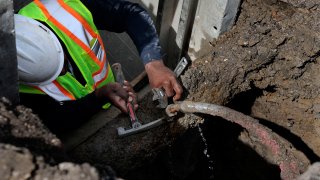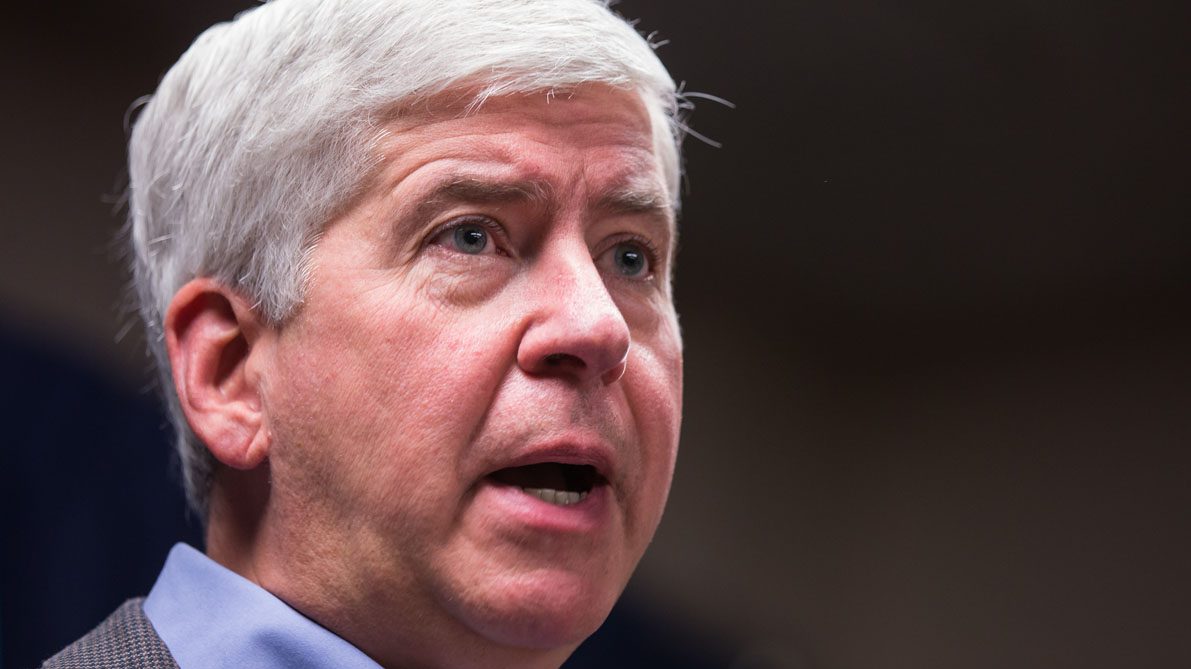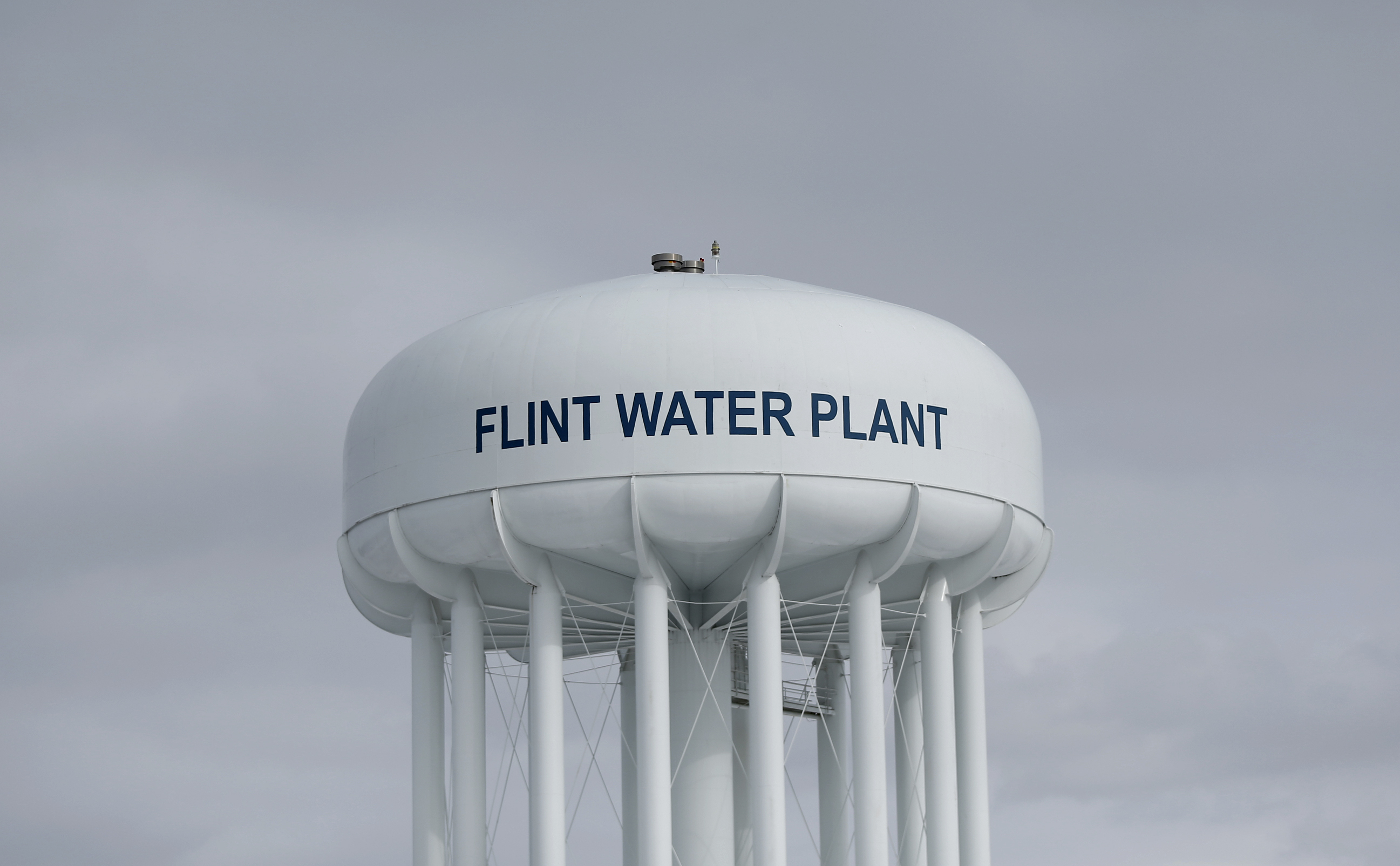
Decades after officials banned lead in gasoline for new cars and stopped the sale of lead paint — huge steps toward eliminating lead exposure to the public — there are still an estimated 500,000 U.S. children with levels of lead in their blood that are considered high, and experts say lead in drinking water is one important reason.
Now, the Environmental Protection Agency is aiming to further reduce lead levels in drinking water and tighten a rule that failed to prevent drinking water crises in cities like Flint, Michigan and Newark, New Jersey. Although the specifics aren’t public, the agency says it will propose requiring that utilities actively replace harmful lead pipes.
President Joe Biden has already called for eliminating the country’s estimated 9.2 million lead pipes, lines that connect water mains under the street to homes and businesses and are responsible for most of the lead that gets into drinking water.
But it’s costly to send out workers to dig up the pipe, lay new ones and replant damaged landscaping. In many cities, homeowners are expected to pay to deal with the pipe on their property.
Get Connecticut local news, weather forecasts and entertainment stories to your inbox. Sign up for NBC Connecticut newsletters.
“Across the population, this has huge effects,” said Ronnie Levin, a former EPA researcher who now teaches at Harvard University’s school of public health.
Kids are especially sensitive to lead exposure and high doses significantly reduce intelligence, impair coordination and disrupt a student’s ability to focus and learn. Behavior can deteriorate. Federal officials say there is no safe level of lead for children — even small amounts can reduce IQ scores.
The updated rules will arrive as the federal government attacks lead on several fronts, with announcements about the dangers in aviation fuel and proposed stricter limits on dust from lead-based paint in older homes and child-care facilities.
Some officials remain more focused on the danger from sources like paint dust, but attention to the danger in water grew after Flint.
Decades of work have drastically reduced childhood blood lead levels in the U.S., but many kids are still being exposed to the toxic metal “and the expectation is that a fair amount of that is from lead in water,” said Dr. Aaron Bernstein, a Boston-based pediatrician who this year became the head of the Centers for Disease Control and Prevention’s environmental health programs.
Bernstein said he is hopeful “that as we remove lead pipes, we’re going to see the numbers continue to fall. And that will be really wonderful.”
A first try
Lead is a nightmare to regulate because unlike other water contaminants, it enters drinking water through pipes and plumbing fixtures after the water has already come out of the treatment plant. It also can vary widely – a family consuming dangerous amounts of lead may live next door to a house with no lead at all.
Levin was part of a contingent known as the “lead mafia.” The group pushed for strong lead regulations, arguing that many people would benefit, so even small health improvements were worthwhile.
Others at EPA believed Levin’s analysis exaggerated the benefits of new regulations and some CDC officials argued that focusing on drinking water would take away from the fight against lead paint, according to a book about the science at EPA by Mark Powell.
But finally in 1991, EPA completed its lead rule.
“It was a tough fight within EPA,” Levin remembered.
The agency did not force utilities to eliminate lead in drinking water, but instead required them to test for lead in homes and add anti-corrosive chemicals.
The EPA set an action level of 15 parts of lead per billion parts water, but allowed 10% of samples to be above that threshold. Utilities that tested above that could be forced to replace their pipes.
The rules have significantly reduced lead in drinking water, contributing to the nation’s 95% decline in young children’s blood lead levels over roughly the last half-century.
But problems persist
The CDC’s Bernstein said, “Our own lead program at CDC lost funding before Flint, as if we had finished the lead problem in this country.” But Flint brought renewed attention to the problem, and new investment in lead poisoning prevention, he said.
Other crises erupted in 2016 in Newark, New Jersey, and in 2018 in Benton Harbor, Michigan.
Joe Cotruvo, a former director of the Drinking Water Standards Division at EPA, said the existing regulations do work, they just aren’t properly enforced.
Others disagree. Current rules do a bad job of monitoring for lead and cities haven’t done enough to push lead levels as far down as possible, said Michael Schock, a recently retired EPA chemist who worked on lead for decades.
“The public health implication is that there was a lot of lead exposures that would have been somewhat preventable” if utilities had been forced to do more, Schock said. Too many people at EPA still don’t want to significantly tighten standards, Schock said.
Take the crisis that unfolded in Newark. Because it had a history of low lead levels, only small numbers of tests were required every three years. Officials would have been more likely to catch rising lead levels sooner if they had sampled more sites, more often, according to a 2022 journal article.
The crises in Newark and in Benton Harbor eventually received a more energetic official response. Lead pipes in both cities were rapidly removed and lead levels dropped.
Levin said removing pipes now and beginning to address lead-leaching plumbing in homes will cost money.
“But, you know, we’ve been diddling around for 30 years.”
__
The Associated Press receives support from the Walton Family Foundation for coverage of water and environmental policy. The AP is solely responsible for all content.



